 W
WThe Messerschmitt Bf 108 Taifun was a German single-engine sport and touring aircraft, developed by Bayerische Flugzeugwerke in the 1930s. The Bf 108 was of all-metal construction.
 W
WThe Messerschmitt Bf 109 is a German World War II fighter aircraft that was, along with the Focke-Wulf Fw 190, the backbone of the Luftwaffe's fighter force. The Bf 109 first saw operational service in 1937 during the Spanish Civil War and was still in service at the dawn of the jet age at the end of World War II in 1945. It was one of the most advanced fighters when it first appeared, with an all-metal monocoque construction, a closed canopy, and retractable landing gear. It was powered by a liquid-cooled, inverted-V12 aero engine. It was called the Me 109 by Allied aircrew and some German aces, even though this was not the official German designation.
 W
WThe Messerschmitt Bf 110, often known unofficially as the Me 110, is a twin-engine Zerstörer, fighter-bomber, and night fighter (Nachtjäger) developed in Nazi Germany in the 1930s and used by the Luftwaffe during World War II. Hermann Göring was a proponent of the Bf 110, believing its heavy armament, speed, and range would make the Bf 110 the Luftwaffe’s premier offensive fighter. Early variants were armed with two MG FF 20 mm cannon, four 7.92 mm MG 17 machine guns, and one 7.92 mm MG 15 machine gun for defence. Development work on an improved type to replace the Bf 110 - the Messerschmitt Me 210 - began before the war started, but its teething troubles resulted in the Bf 110 soldiering on until the end of the war in various roles. Its intended replacements, the aforementioned Me 210 and the significantly improved Me 410 Hornisse never fully replaced the Bf 110.
 W
WThe Messerschmitt Bf 110, often (erroneously) called Me 110, was a twin-engine heavy fighter in the service of the Luftwaffe during World War II. Hermann Göring was a proponent of the Bf 110, and nicknamed it his Eisenseiten ("Ironsides"). Development work on an improved type to replace the Bf 110, the Messerschmitt Me 210 began before the war started, but its teething troubles resulted in the Bf 110 soldiering on until the end of the war in various roles, alongside its replacements, the Me 210 and the Me 410.
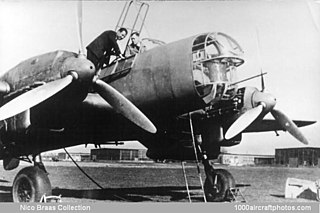 W
WThe Messerschmitt Bf 161 was a 1930s prototype German reconnaissance aircraft.
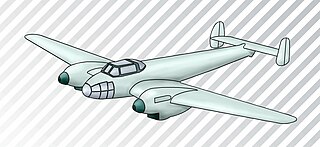 W
WThe Messerschmitt Bf 162 was a light bomber aircraft designed in Germany prior to World War II, which flew only in prototype form.
 W
WThe Messerschmitt Bf 163 was an STOL aircraft designed by BFW and built by Weserflug before World War II.
 W
WThe Enzian was a German WWII surface-to-air anti-aircraft missile that was the first to use a radio controlled guidance system. During the missile's development in the late stages of the war it was plagued by organisational problems and was cancelled before becoming operational.
 W
WThe M 17 was a German single-engine high-wing sports monoplane. It was designed by Willy Messerschmitt in 1925 in Bamberg. This aircraft won many competitions and allowed Willy Messerschmitt to build his first factory.
 W
WThe Bayerische Flugzeugwerke M 18, was an airliner, produced in Germany in the late 1920s.
 W
WThe ICAR 36 / ICAR Comercial (sic), variously also known as the ICAR M 36, Messerschmitt M 36 or BFW M.36, was a Messerschmitt design built and tested by the Romanian company ICAR in the mid-1930s. It was a small, single-engine high-wing airliner, the first civil transport aircraft built in Romania.
 W
WThe Messerschmitt Me 163 Komet is a German interceptor aircraft designed for point-defence that is the only rocket-powered fighter aircraft ever to have been operational and the first piloted aircraft of any type to exceed 1000 km/h (621 mph) in level flight. Designed by Alexander Lippisch, its performance and aspects of its design were unprecedented. German test pilot Heini Dittmar in early July 1944 reached 1,130 km/h (700 mph), an unofficial flight airspeed record unmatched by turbojet-powered aircraft for almost a decade.
 W
WThe first Messerschmitt Me 209 was a single-engine racing aircraft which was designed for and succeeded at breaking speed records. This Me 209 was a completely new aircraft whose designation was used by Messerschmitt as a propaganda tool. Although the aircraft was designed only to break speed records, it was hoped that its name would associate it with the Bf 109 already in combat service.
 W
WThe Me 209 of 1943 was an attempt to create an enhanced version of the Bf 109, which served as the Luftwaffe's primary fighter aircraft throughout World War II. The Me 209, despite its designation, bore no relationship to the earlier Me 209.
 W
WThe Messerschmitt Me 210 was a German heavy fighter and ground-attack aircraft of World War II. Design started before the war, as a replacement for the Bf 110. The first examples were ready in 1939, but they proved to have unacceptably poor flight characteristics due to serious wing planform and fuselage design flaws. A large-scale operational testing program throughout 1941 and early 1942 did not cure the type's problems. The design entered limited service in 1942, but was soon replaced by the Messerschmitt Me 410 Hornisse, a further development of the Me 210. The failure of the Me 210's development program meant the Luftwaffe was forced to continue operating the Bf 110 after it had become outdated, despite mounting losses.
 W
WThe Messerschmitt Me 261 Adolfine was a long-range reconnaissance aircraft designed in the late 1930s. It looked like an enlarged version of the Messerschmitt Bf 110. It was not put into production; just three Me 261s were built and used primarily for testing and development purposes.
 W
WThe Messerschmitt Me 262, nicknamed Schwalbe in fighter versions, or Sturmvogel in fighter-bomber versions, was the world's first operational jet-powered fighter aircraft. Design work started before World War II began, but problems with engines, metallurgy and top-level interference kept the aircraft from operational status with the Luftwaffe until mid-1944. The Me 262 was faster and more heavily armed than any Allied fighter, including the British jet-powered Gloster Meteor. One of the most advanced aviation designs in operational use during World War II, the Me 262's roles included light bomber, reconnaissance and experimental night fighter versions.
 W
WThe Messerschmitt Me 263 Scholle (plaice) was a rocket-powered fighter aircraft developed from the Me 163 Komet towards the end of World War II. Three prototypes were built but never flown under their own power as the rapidly deteriorating military situation in Germany prevented the completion of the test program.
 W
WThe Messerschmitt Me 264 was a long-range strategic bomber developed during World War II for the German Luftwaffe as its main strategic bomber. The design was later selected as Messerschmitt's competitor in the Reichsluftfahrtministerium's Amerikabomber programme, for a strategic bomber capable of attacking New York City from bases in France or the Azores.
 W
WThe Messerschmitt Me 309 was a prototype German fighter, designed in the early years of World War II to replace the Bf 109. Although it had many advanced features, the Me 309's performance left much to be desired and it had so many problems that the project was cancelled with only four prototypes built. The Me 309 was one of two failed Messerschmitt projects intended to replace the aging Bf 109, the other being the Me 209 of 1943.
 W
WThe Messerschmitt Me 321 Gigant was a large German cargo glider developed and used during World War II. Intended to support large scale invasions, the Me 321 saw very limited use due to the low availability of suitable tug aircraft, high vulnerability whilst in flight and the difficult ground handling, both at base and at destination landing sites. The Me 321 was developed, in stages, into the six-engined Messerschmitt Me 323 Gigant, which removed some of the problems with ground handling, but vulnerability to ground fire and aerial attack remained a constant problem during operations of all variants.
 W
WThe Messerschmitt Me 323 Gigant ("Giant") was a German military transport aircraft of World War II. It was a powered variant of the Me 321 military glider and was the largest land-based transport aircraft to fly during the war. A total of 213 are recorded as having been made, 15 being converted from the Me 321.
 W
WThe Messerschmitt Me 328 was originally designed as a parasite aircraft to protect Luftwaffe bomber formations during World War II. During its protracted development, a wide variety of other roles were suggested for it. Late in the war, the design was resurrected for consideration as a Selbstopfer aircraft, but was judged unsuitable even for this purpose. The tiny fighter was to have been propelled by pulsejets, but the unsuitability of these engines doomed the Me 328 from the start.
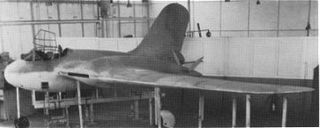 W
WThe Messerschmitt Me 329 was a design project for a heavy fighter and ground-attack aircraft, developed towards the end of World War II. It was a competitor and possible successor to the Me 410. Like the Me 265, the Me 329 used an advanced flying wing design. Other advanced features included the pilot and navigator sitting in tandem in a broad bubble canopy, and a remote-controlled rear gun in the tail. In spite of the futuristic design, the improvement in performance over the Me 410 was marginal. Development received a low priority, and while a full-scale glider was tested at Rechlin in the winter of 1944/5, work on the project was cancelled shortly after.
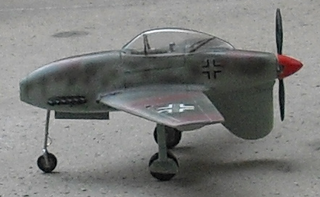 W
WThe Messerschmitt Me 334 was a proposed German piston-engined fighter, designed by Alexander Lippisch. No examples were built.
 W
WThe Messerschmitt Me 410 Hornisse (Hornet) is a German heavy fighter and Schnellbomber used by the Luftwaffe during World War II. Though an incremental improvement of the Me 210, it had a new wing plan, longer fuselage and engines of greater power. The changes were significant enough for the aircraft to be renamed the Me 410.
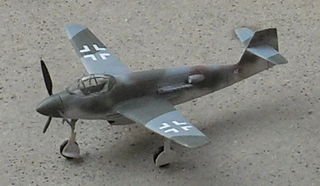 W
WThe Messerschmitt Me 509 was an all-metal fighter project, underway in Germany during World War II.
 W
WThe Messerschmitt Me 609 was a World War II German project which joined two fuselages of the Me 309 fighter prototype together to form a heavy fighter.
 W
WThe Messerschmitt P.1079 was a series of different experimental Messerschmitt fighters projected during the Second World War. The last designs were proposed in 1944 towards the end of the Third Reich. Except for the last one, all the aircraft designs were to be powered by pulse jets, the same engines used in the V-1 flying bomb.
 W
WThe Messerschmitt P.1099 was a two-seat prototype jet plane designed by Messerschmitt for the Luftwaffe before the end of the Second World War.
 W
WThe Messerschmitt P.1101 was a single-seat, single-jet fighter project of World War II, developed as part of the 15 July 1944 Emergency Fighter Program which sought a second generation of jet fighters for the Third Reich. A prominent feature of the P.1101 prototype was that the sweep angle of the wings could be changed before flight, a feature further developed in later variable-sweep aircraft such as the Bell X-5 and Grumman XF10F Jaguar.
 W
WThe Messerschmitt P.1106 was a proposed German fighter aircraft project near the end of World War II. It was intended as an improvement to the Messerschmitt P.1101.
 W
WThe Messerschmitt P.1111 was a jet fighter/interceptor project, designed by Messerschmitt for the Luftwaffe near the end of World War II.
 W
WThe Messerschmitt P.1112 was a proposed German jet fighter, developed by Messerschmitt AG during the closing stages of World War II, and intended for use by the Luftwaffe. The progress of the war prevented the completion of a prototype before the fall of Nazi Germany. Its design, however, had a direct influence on postwar US Navy carrier fighters.
 W
WThe Messerschmitt P.1110 was a design for a single-seat, high-altitude interceptor, prepared for the German Luftwaffe by the Messerschmitt aircraft manufacturing company, under the Emergency Fighter Program during the last months of World War II.